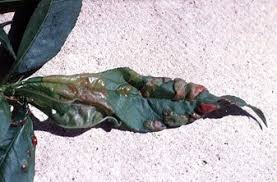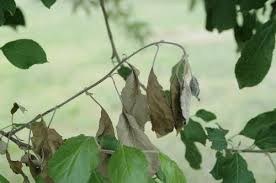Dormant Pruning and Sprays for Fruit Trees
Late February through March is the ideal time to tackle annual pruning on fruit trees in Johnson County— as long as the wood isn’t frozen. Despite the old adage about the best time to prune being whenever your blade is sharp, heavy pruning of fruit and most deciduous trees is best saved for late winter before bud swell. It’s a uniquely perfect time to remove the wood damaged from the previous growing season (heavy fruit loads, diseases, insect damage) and winter storms (high winds and ice). Pruning speeds recovery and prevents further damage along with the following benefits:
- Promotes a strong tree structure. Pruning is especially important when trees are young.
- Allows light and air to penetrate the canopy. Sunlight is needed to produce fruit buds for the following year and for the fruit to color properly.
- Control tree size. A small tree is easier to thin, harvest, and prune than a larger tree. Pest and disease control is also easier and more effective.
General Pruning Recommendations
- Take out broken, damaged or diseased branches
- If two branches form a narrow-angle, prune one out. Narrow angles are weak angles and tend to break during wind or ice storms.
- Take out all suckers. Suckers are branches that grow straight up. They may originate from the trunk or from major branches
- If two branches cross and rub against one another, one should be taken out.
- Cut back or remove branches that are so low they interfere with harvest or pruning. If cutting back a branch, always cut back to another branch or a bud. Do not leave a stub.
- Cut back branches to reduce the total size of the tree, if necessary.
- Thin branches on the interior of the tree.
Follow the steps above in order but stop if you reach 30% of the tree. Click this link for more recommendations from K-State on pruning fruit trees including more specific instructions by species and tree maturity: http://www.ksuhortnewsletter.org/newsletters/category/pruning
Dormant sprays - selecting resistant varieties along with good sanitation, pruning and fertilizing (done in early spring at bud break) should be the first line of defense against pest and disease. But if you have observed excessive damage in the past then certain chemical treatments (both natural and synthetically derived) can be an effective tool and some spray applications should be made before visible tree growth. Generally speaking, dormant oil sprays are used to control scale insects, aphids and mite eggs. Fungicides and bactericides applied during the dormant period are used to control diseases such as peach leaf curl and fire blight in apple.
For more information on spray schedules and recommend treatments for common fruit pests and disease please follow this link: https://www.maraisdescygnes.k-state.edu/lawn-garden/popular-lawn-garden-publications/plant-and-pest-problems/Fruit_Pest_Control_for_Home_Gardens_C592.pdf
 Peach Leaf Curl
Peach Leaf Curl
 Apple Fire Blight
Apple Fire Blight